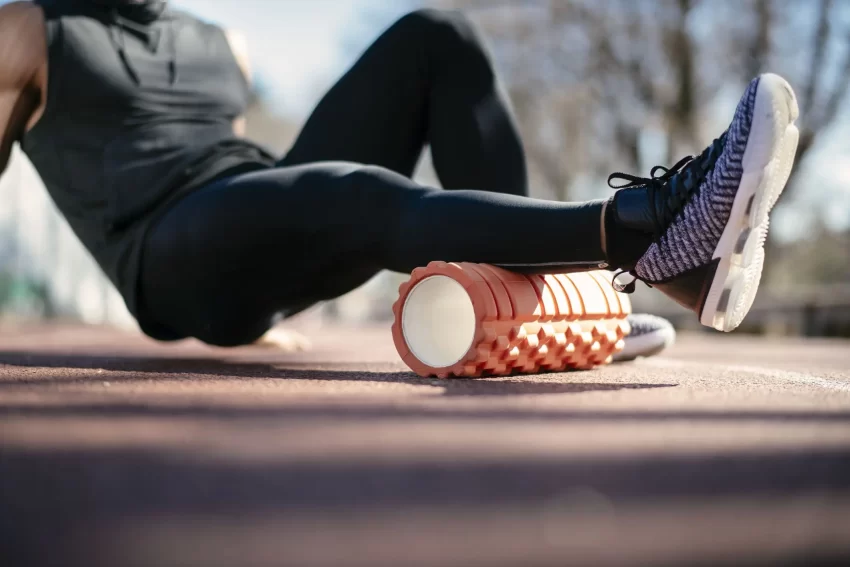The massage roller has positioned itself as an essential tool in the world of fitness and rehabilitation. Although it has been surrounded by myths and misconceptions, its correct use can make a difference in the way you move, train and recover. In this article, we explore how and why to use the massage roller, based on current evidence and the mechanisms that truly benefit your body.
What is a massage roller and how does it work?
The foam roller is a cylindrical device designed to apply pressure to muscles and soft tissues. Contrary to what some myths suggest, it does not “break up” scar tissue nor permanently lengthen muscles. Its main mechanism of action is the reduction of neuromuscular tone. By applying pressure to muscles, receptors in both the peripheral and central nervous systems are stimulated, helping to “unlock” accumulated tension and improve muscle function.
Benefits of using the massage roller
- Reduction of muscle tone and relief of stiffness: By decreasing the neurological blockade, the stiffness of the area is reduced, facilitating a greater range of motion without altering the structure of the muscle.
- Improved range of motion: Decreased muscle tone allows joints to move more fluidly, optimizing coordination between agonist, antagonist and stabilizing muscles.
- Acceleration of recovery: Used post-workout, the roller helps reduce inflammation and improve blood circulation, which favors the elimination of metabolic waste and the arrival of nutrients to the tissues.
- Complementary to other mobility techniques: While the roller is helpful, it is not a magic solution. It is most effective when combined with stretching, mobility exercises and corrective movements, addressing mobility in a holistic way.
When to use the roller: Pre-workout vs. Post-workout
Before training:
The use of the roller in warming up should be limited to specific cases. If you have a mobility dysfunction or localized stiffness, a short session (around 1-4 minutes, depending on your needs) can help to “unlock” the area. However, for most functional athletes, spending a lot of time foam rolling before training could take energy away from other preparation methods, such as activation exercises and sport-specific movements.
After training:
Roller therapy is ideal for recovery. After an intense workout, muscles can experience inflammation, soreness, and a buildup of tension. A well-executed roller session, combined with deep breathing techniques, activates the parasympathetic system (the part of the nervous system responsible for rest and recovery), helping to reduce stiffness and speed up the recovery process.
How to use the massage roller effectively
- Apply the appropriate pressure: It's not about seeking extreme pain. The goal is to work at a moderate intensity (ideally, keeping the discomfort sensation around 5/10 on a pain scale). Excessive pressure can trigger stress responses in the body, counteracting the desired benefits.
- Controlled and focused movements: Slowly move the roller over the area to be treated, focusing on the muscles that are most tense. Avoid sudden movements and maintain deep, controlled breathing to encourage relaxation.
- Integrate other mobility techniques: To get the most benefit, combine the use of the roller with stretching, corrective exercises and dynamic movements. This will allow you to work not only the fascia and muscles, but also the coordination and functionality of the joints.
- Respect your body: Listen to your body's signals. If you experience severe pain or unusual discomfort, reduce the intensity or consult a specialist. The roller is a supportive tool, it should not cause harm or extreme discomfort.
Conclusion
The massage roller is a versatile and effective tool when used with knowledge and moderation. Its true power lies in the reduced muscle tone and the recovery optimization, rather than permanent structural changes to your muscles. By intelligently integrating it into your routine—whether to relieve specific tensions before training or to speed up recovery post-workout—you can boost your performance and maintain healthy mobility.
Remember: It's not about seeking more pain, but rather applying just the right amount of pressure to release tension and promote overall well-being. Use the massage roller as part of a comprehensive mobility and recovery strategy, and you will see how your body responds with greater flexibility, functionality and speed in recovery.
